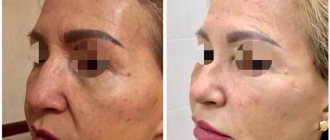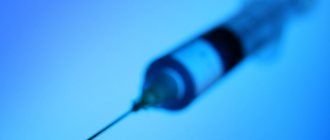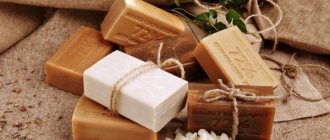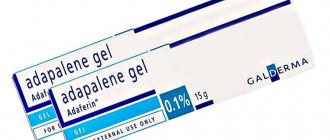Indications for correction of cheekbones and cheeks
Proportional, high cheekbones with a clearly defined contour make a person’s face more attractive.
Unfortunately, reality does not always correspond to the canons of beauty. For many women, cheekbones are not on the list of strengths of their appearance. The cause of an implicit aesthetic defect can be both shortcomings of nature (genetic characteristics) and secondary changes in tissues that have developed as a result of the aging process. The problem in this case can really be called “implicit”. Inexpressive cheekbones do not catch the eye, as is the case with a hump on the nose or a double chin. The situation does not require urgent measures. Many people do not pay special attention to the zygomatic eminence and do not realize that appearance can be radically improved through simple and inexpensive correction of the cheekbones using one of the alternative techniques.
How to determine whether there are indications for aesthetic surgery? Plastic surgery of the cheeks and cheekbones will bring amazing results if the face seems “flat”, if the patient does not have a clear line of the zygomatic eminence, if the cheekbones do not emphasize the beauty of the eyes. Indirect indications for the procedure are deepening of the tear and nasolabial grooves, a strong expression of the fold between the cheek and the lower eyelid. A direct indication for anti-aging correction is the ptosis of the complex of tissues in the middle zone of the face, which is manifested by the formation of “jowls” or “bulldog cheeks”, as well as a general deformation of the facial contour.
A direct indication for cheekbone correction is any degree of facial asymmetry, both congenital and acquired, as well as deformation of the zygomatic eminence area after diseases, injuries or unsuccessful cosmetic procedures. In this case, the patient may be recommended both contour plastic surgery and more radical methods - lipofilling, plastic surgery. The choice of correction method is determined by the specifics of the aesthetic problem.
Contraindications
Lipofilling has its own limitations. Thus, manipulation will be denied if the patient has pathological conditions such as:
- bleeding disorders and other blood diseases;
- treatment with anticoagulants ;
- autoimmune diseases ;
- oncological pathologies;
- inflammatory processes;
- pustular formations in areas requiring treatment;
- dermatological and infectious diseases occurring in acute form;
- pathologies of the cardiovascular system;
- diabetes ;
- atherosclerosis.
In addition, contraindications include age under 18 years, as well as the period of childbearing and breastfeeding.
Cheekbone plastic surgery: three correction methods
Currently, specialists in the field of aesthetic medicine are ready to offer their patients three options for modeling the area of the zygomatic eminence, cheeks and middle third of the face. This is contour plastic surgery, lipofilling or plastic surgery with the installation of implants.
Cheek contour contouring
The simplest, most accessible and popular technique is cheekbone contouring. The procedure does not require long preparation and a difficult rehabilitation period. Injections of fillers based on hyaluronic acid or other organic compounds are administered on an outpatient basis. The manipulations are a little painful, but local anesthesia successfully eliminates discomfort during the procedure. Immediately after completing the injection modeling, the person returns to the normal rhythm of life.
The principle of operation of the method is based on the introduction of drugs with a volume-forming effect under the skin. The most commonly used fillers are hyaluronic acid. Other contour fillers have become popular in recent years, notably Radiesse; Radiesse filler contains calcium hydroxyapatite. Also in cosmetology, preparations with polylactic acid are used, which allow obtaining the most stable and long-lasting results.
Cheekbone contouring gives quick and predictable results. The effect is visible immediately after the volume-forming drug is introduced into the facial tissue. If two-phase gels are used, the height of the cheekbones may increase for several days after the procedure. The smooth increase in effect is explained by the fact that the gel attracts and retains water.
The effect lasts from nine months to one and a half years, depending on the drug used. Subsequently, the procedure can be repeated, more than once. There are few contraindications to the injection of fillers; pre-procedure diagnostics are prescribed only to patients with chronic pathology. Contour gels do not provoke allergic or autoimmune reactions; immunologically, they are completely compatible with the tissues of the human body.
Why hand lipofilling?
Your own adipose tissue is not rejected by the body and does not cause allergies. The transplanted fat grows with blood vessels, takes root and, accordingly, guarantees long-term preservation of the lipofilling result. Only 20% of the adipose tissue is destroyed after transplantation, the remaining 80% of the transplanted fat takes root, thereby lipofilling of the hands ensures the return of elasticity and youth to the skin of the hands, relieving it of dryness and wrinkles.
Hand lipofilling: rehabilitation period
For 1 day after lipofilling of the hands, the patient wears a protective bandage on the skin of the hands, and then only applies special ointments 3 to 4 times a day.
You need to take care of your hands for a month after surgery. It is recommended to keep them above waist level for two weeks to reduce swelling of the operated area. You should not put your hands under your head while sleeping, wash dishes or do other household work. A visit to the sauna should be postponed for a month.
The patient should not be afraid of bruises in the puncture area: they will disappear after 5 to 7 days. It makes sense to evaluate the effect of the operation after 2–3 months, when most of the fat cells have taken root in the new location.
Flawless makeup and a chiseled figure will not deceive others. After all, it’s enough to look at a woman’s hands to determine her real age. Hands, unlike the décolleté and neck, cannot be hidden under an elegant scarf. Dozens of times a day, women’s hands, like restless birds, fly up to fix their hair, to respond to a greeting handshake, to nestle comfortably in the palms of a loved one. A woman who decides to undergo lipofilling of her arms will, at any age, perform all these movements with natural grace and confidence in her own youth and attractiveness.
Lipofilling: cheekbone augmentation with your own fat
If contouring is a cosmetic procedure, then lipofilling is a plastic surgery, albeit a gentle one that does not leave visible marks. A plastic surgeon performs lipofilling of the cheekbones. The operation takes place in three stages. All manipulations are carried out under local anesthesia; as a rule, there is no need for anesthesia.
At the first stage, the plastic surgeon takes adipose tissue for subsequent transplantation. The source of fat cells is an area of the body with good development of subcutaneous tissue. As a rule, the anterior wall of the abdomen, buttocks or thighs is used as a donor. The plastic surgeon removes fat cells using gentle water-jet liposuction, which does not damage blood vessels and allows you to obtain intact, viable cells.
At the second stage of the operation, the material is sent to the laboratory. In the laboratory, fat cells are cleaned of impurities (liposuction solution, blood, dead cells) and saturated with growth factors, which improve graft survival in the correction area.
The third stage of the operation is the introduction of a fraction of viable cells into the tissue of the correction zone, in this case, in the area of the zygomatic eminence. To do this, the plastic surgeon uses the injection method. Fat is injected through atraumatic cannulas with a blunt end, without incisions. Tissue trauma during surgery is minimal. Complications are excluded; minor side effects such as hematomas and swelling of the recipient area disappear within a few days.
The advantage of the operation is a lasting and most natural result. Lipofilling allows you to achieve a uniform increase in cheekbones. The face after surgery looks harmonious and proportional. Fat cells integrate into the tissue architecture, do not cause inflammatory reactions, and do not provoke an immune response. The result lasts for many years, which distinguishes this technique favorably from contour correction.
Another advantage of lipofilling is its anti-aging effect. The cheekbone correction procedure triggers the processes of self-healing and renewal of the tissues of the middle third of the face. A rejuvenating effect is achieved due to the fact that the fat graft contains many stem cells; in addition, before transplantation, it is enriched with growth factors that stimulate the regeneration process at the cellular and tissue level.
Preparation
To achieve the desired result, you need to properly prepare for the procedure. First, the patient must visit a specialist who will conduct an examination, assess the condition of the skin and determine the scope of work. To exclude the presence of contraindications, laboratory and instrumental examinations are prescribed.
Why can our articles be trusted?
We make health information clear, accessible and relevant.
- All articles are checked by practicing doctors.
- We take scientific literature and the latest research as a basis.
- We publish detailed articles that answer all questions.
If there are no restrictions on performing cheekbone lipofilling, then the cosmetologist models the cheeks and cheekbones on a computer, which allows you to visualize the result that the client expects.
Also at this stage, it is necessary to determine the sites for taking fat tissue for transplantation and calculate the amount of fat that will be required for correction.
To track the results, photos must be taken before and after the procedure.
Fat transfer to the arms
Fat transfer into the arms is called lipofilling.
To eliminate the risk of complications, during the preparatory period patients must adhere to certain recommendations given by the doctor.
At least 2 weeks before the expected date of the manipulation, you must stop taking medications that affect blood clotting. This will minimize the likelihood of bleeding.
The last meal should be 6-8 hours before the correction.
Malarplasty: cheekbone augmentation with implants
Lipofilling has an objective limitation to its use: in a patient with a low percentage of body fat, it is difficult to obtain the required number of fat cells due to the poor development of subcutaneous tissue. In such a situation, a full-fledged plastic surgery may be recommended - cheekbone augmentation with implants.
The implant can be a silicone prosthesis or the patient's own cartilage tissue. Each option has its own advantages and disadvantages. If a silicone implant is used during cheek surgery, a protective shell of fibrous tissue may subsequently form around it. However, it does not affect the aesthetics of the cheekbones and face as a whole.
A cartilage implant (a fragment of the patient’s own cartilage tissue) is completely immunologically compatible with tissues, but cartilage is susceptible to the action of enzyme systems. In rare cases, partial resorption (destruction by enzymes) of the implant occurs, which can have a negative impact on the aesthetic result of plastic surgery. Due to the high percentage of resorption, surgeons abandoned the use of autologous bone grafts.
What there can be no doubt about is that after the operation there will be no visible marks left on the face. There will be no scars on the skin, since the plastic surgeon places the implants through incisions in the oral mucosa. The mucous membrane has the highest regenerative potential, recovery is fast. The wound heals in a few days. In the early rehabilitation period, it is enough to strengthen oral hygiene measures, avoid solid foods, hot or cold dishes and drinks.
Recovery period
The time required for complete healing may vary for each case. Everything will depend on the amount of work performed, the severity of the problem, the patient’s age and the characteristics of the body.
To speed up the recovery period, experts recommend adhering to certain rules.
To prevent infection from entering the wounds, puncture sites should be regularly treated with an antiseptic solution.
For several days, the face should be protected from any mechanical impact, do not use towels to dry the skin, and do not apply decorative cosmetics.
Lipofilling of the lower leg
Lipofilling of the lower leg is a surgical intervention that involves transplanting fat into the lower leg to form a certain volume.
It is also worth giving up sports, visiting the bathhouse, sauna, swimming pool and solarium for a while. Do not expose treated areas to sunlight.
Facial massage, peelings and hardware procedures are also not allowed.
It is advisable to sleep on your back on raised pillows.
Cheek surgery
Some patients undergo cheek surgery to improve the aesthetics of the middle third of the face. The essence of the manipulation is to remove local fat “pillows” that are located between the masticatory muscles and are called Bisha’s lumps. Removing vestigial fat tissue allows you to create clearly defined and more expressive cheekbones without the introduction of contour gels, fat grafting or implants.
At the Soho Clinic (Moscow) you can get a free consultation with a plastic surgeon, find out the cost of cheekbone correction and receive individual recommendations regarding the optimal method of rejuvenation and aesthetic modeling of the face.
How long does the effect last?
The length of time the result is maintained will be influenced by several factors - the individual characteristics of the body, the patient’s age, the severity of the defect, and the condition of the skin. On average, the procedure lasts for 3-5 years.
Cheek lipofilling has become widespread due to its high efficiency and health safety. In most cases, the manipulation is well tolerated by patients. However, we must not forget about contraindications and do not ignore them. To avoid consequences, you need to contact only trusted clinics.
Preparing adipose tissue for lipofilling: how the procedure is performed
You have heard more than once that adipose tissue is processed for lipofilling. But what does it mean? An exclusive look behind the scenes.
Photo 1: Aspiration of own fat. Before re-administration, the substance must be purified, filtered and separated from its aqueous components.
Photos 2 and 3: Depending on the use for which lipofilling is planned, the extracted fat is processed using different methods before use. Various filter systems allow you to extract the desired consistency and quantity.
Photo 4: To enlarge the breasts or buttocks, more volume will be required than with an injection to eliminate wrinkles on the face. In addition, the transferred pieces of fat may be slightly larger than necessary. You can clearly see this “coarse grain” in comparison with Figure 5.
Photo 5: In the facial area it is necessary to use extremely finely processed fat: microfat substance to increase the volume of exposed parts of the body; Nanofett to be able to treat even the smallest wrinkles, age spots or scars discreetly but effectively. Particles of too large fat can, for example, show through the yellow color on very thin eyelid skin, while the skin on the buttocks and chest is much thicker.
Prices
| Code | Procedure name | Cost, rub. |
| F35.06.03.0.002 | Plastic surgery of subcutaneous fat tissue using the method of moving one’s own fat (lipofilling) (1 zone) | 16500 |
| F35.06.03.0.003 | Plastic surgery of subcutaneous fat tissue by moving microparticles of one’s own fat (nanolipofilling) (10 ml) | 19500 |
| F35.06.03.0.004 | Plastic surgery of subcutaneous fat tissue using the method of moving one’s own fat (lipofilling with the Body-Jet apparatus) (1 zone) | 19500 |
| F35.06.03.0.005 | Plastic surgery of subcutaneous fat tissue using the method of moving one’s own fat (lipofilling) of the mammary glands | 165000 |
| F35.06.03.0.001 | Plastic surgery of subcutaneous fat tissue using the method of moving one’s own fat (lipofilling) of the buttocks | 198000 |
You are in good hands at our ETHIANUM clinic in Heidelberg
For more than ten years, the research group worked under the leadership of the founder of the clinic, Prof. Dr. med. Günter Hermann, who worked for many years in the field of autologous transplantation and told the world about the potential of autologous adipose tissue, in particular the regenerative properties of endogenous stem cells from adipose tissue.
Constant research in this field and collaboration with scientists and research institutes around the world ensure that only the most modern and gentle methods are used at the ETHIANUM Clinic in Heidelberg. The focus is also on the safety of treatment with autologous fat.
For example, in some cases we doubt the need to use autologous fat for breast augmentation surgery after removal as a result of an oncological process. Because there is a hypothesis that stem cells transferred to adipose tissue can activate the remaining dormant tumor cells. Numerous previous studies show that breast augmentation using fatty tissue can be harmful to the patient.
For this reason, the ETHIANUM Clinic in Heidelberg uses only the safe method of autologous fat transplantation. Guided by many years of experience, our specialists in lipofilling, breast enlargement using one’s own adipose tissue, undertake this type of operation only two years after completion of therapy for breast cancer, after confirming that there is no tumor growth at the local level. Currently, international research is being conducted aimed at obtaining technology that will make it possible to shorten this interval.










